 W
WA rock shelter is a shallow cave-like opening at the base of a bluff or cliff. In contrast to solutional caves (karst), which are often many miles long, rock shelters are almost always modest in size and extent.
 W
WThe Abrigo de la Quebrada is an archaeological site in the municipality of Chelva, in the Spanish Province of Valencia, ca. 65 km northwest of the city of Valencia. It shows evidence of frequent occupation by Neanderthals.
 W
WAnegundi previously called Kishkindha is a village in the Gangavathi taluk, Koppal district in the Indian state of Karnataka, It is older than Hampi situated on the northern bank of Tungabhadra River, Huchappayana matha temple, Pampa Sarovar, Aramane, Ranganatha temple, Kamal Mahal, and Nava Brindavana are the major attractions Nimvapuram, a nearby village, has a mount of ash believed to be the cremated remains of monkey king Vaali. Anegundi is best visited along with Hampi, it is part of the world Heritage Site, Hampi, being developed into a world class tourism spot by engaging the locals to sensitise them to their cultural wealth and provide them a means of livelihood. Existing tanks in the village have been redesigned to store clean drinking water and proper drainage facilities developed to keep the surroundings clean and hygienic. The Kishkinda Trust is working on tourism development in Anegundi.
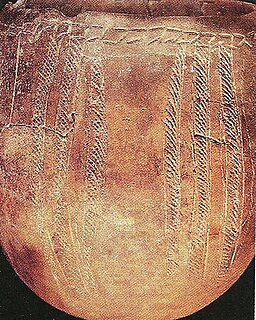 W
WAsa Koma is an archaeological site in Djibouti.
 W
WThe Bhimbetka rock shelters are an archaeological site in central India that spans the prehistoric Paleolithic and Mesolithic periods, as well as the historic period. It exhibits the earliest traces of human life in India and evidence of Stone Age starting at the site in Acheulian times. It is located in the Raisen District in the Indian state of Madhya Pradesh about 45 kilometres (28 mi) south-east of Bhopal. It is a UNESCO World Heritage Site that consists of seven hills and over 750 rock shelters distributed over 10 km (6.2 mi). At least some of the shelters were inhabited more than 100,000 years ago. The rock shelters and caves provide evidence of, according to Encyclopædia Britannica, a "rare glimpse" into human settlement and cultural evolution from hunter-gatherers, to agriculture, and expressions of prehistoric spirituality.
 W
WBorder Cave is a rock shelter on the western scarp of the Lebombo Mountains in KwaZulu-Natal near the border between South Africa and Swaziland. Border Cave has a remarkably continuous stratigraphic record of occupation spanning about 200 ka. Anatomically modern Homo sapiens skeletons together with stone tools and chipping debris were recovered. Dating by carbon-14, amino acid racemisation and electron spin resonance (ESR) places the oldest sedimentary ash at some 200 kiloannum.
 W
WCastel Merle is a complex of 10 prehistoric rock shelters in Sergeac, in the Dordogne region of France. It is close to the Lascaux rock art caves and is situated in the region which forms the Unesco World Heritage site Prehistoric Sites and Decorated Caves of the Vézère Valley, but is not officially a part of it. The finds in the shelters date to the Mousterian and Magdalenian periods, or between 160,000 and 12,000 years ago. The most important of the 10 shelters is the Reverdit rockshelter.
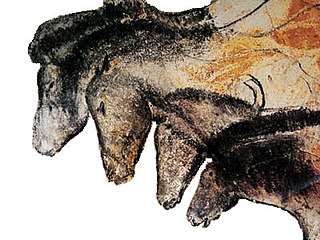 W
WThe Chauvet-Pont-d'Arc Cave in the Ardèche department of southeastern France is a cave that contains some of the best-preserved figurative cave paintings in the world, as well as other evidence of Upper Paleolithic life. It is located near the commune of Vallon-Pont-d'Arc on a limestone cliff above the former bed of the Ardèche River, in the Gorges de l'Ardèche.
 W
WCueva Fell is a natural cave and archaeological site in southern Patagonia. Cueva Fell is in proximity to the Pali Aike Crater, another significant archaeological site. Cueva Fell combined with the nearby Pali Aike site have been submitted to UNESCO as a possible World Heritage Site.
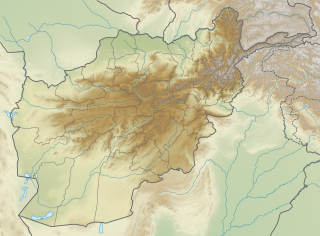 W
WDarra-e Kūr or Bābā Darwīsh, is an archaeological site in Badakhshan province in Afghanistan. It is situated just northeast of Kalafgān near the village of Chinār-i Gunjus Khān 63 km (39.1 mi) east of Taloqan, on the road to Faizabad. The cave is situated atop the side of the valley near the hamlet of Bābā Darwīsh.
 W
WDeorkothar is a location of archaeological importance in Madhya Pradesh, Central India. It is known for its Buddhist stupas and was discovered in 1982.These stupas are credited to the Mauryan emperor, Ashoka.
 W
WDiepkloof Rock Shelter is a rock shelter in Western Cape, South Africa in which has been found some of the earliest evidence of the human use of symbols, in the form of patterns engraved upon ostrich eggshell water containers. These date around 60,000 years ago.
 W
WEl Salt is an archaeological site from the Middle Paleolithic near Alcoy, in the Spanish Province of Alicante, which was frequented by groups of archaic humans for thousands of years. Scientists have found evidence of Neanderthal settlements, including fire pits and flint tools, dating back at least 50,000 years, including six teeth; they disappeared from the site and possibly the Iberian peninsula some 45,000 years ago. In 2014, the then-oldest known human coprolites were discovered at the site, which revealed that Neanderthals' diets included plants.
 W
WEnkapune Ya Muto, also known as Twilight Cave, is a Late Stone Age site on the Mau Escarpment of Kenya. Beads made of perforated ostrich egg shells found at the site have been dated to 40,000 years ago. The beads found at the site represent the early human use of personal ornaments.
 W
WGreat Mural Rock Art consists of prehistoric paintings of humans and other animals, often larger than life-size, on the walls and ceilings of natural rock shelters in the mountains of northern Baja California Sur and southern Baja California, Mexico. This group of monuments comprises the site Rock Paintings of Sierra de San Francisco, which is included on the UNESCO World Heritage List.
 W
WGudiyam Caves are rock shelters in South India and known for prehistoric stone tools and culture. They were first identified by British geologist Robert Bruce Foote. This ancient site is situated in the Thiruvallur district near the Poondi reservoir, 60 km (37.3 mi) from Chennai, Tamil Nadu.
 W
WHandoga is located 14 km to the west of Dikhil, Djibouti. During the first excavations in 1970, archaeologists discovered foundations of stone houses and the walls of a stone edifice with a recess that faces Mecca.
 W
WHowieson's Poort Shelter is a small rock shelter in South Africa containing the archaeological site from which the Howiesons Poort period in the Middle Stone Age gets its name. This period lasted around 5,000 years, between roughly 65,800 BP and 59,500 BP. This period is important as it, together with the Stillbay period 7,000 years earlier, provides the first evidence of human symbolism and technological skills that were later to appear in the Upper Paleolithic.
 W
WIraq ed-Dubb, or the Cave of the Bear, is an early Neolithic archeological site 7 km (4.3 mi) northwest of Ajlun in the Jordan Valley, in modern-day Jordan. The settlement existed before 8,000 BCE and experimented with the cultivation of founder crops, side by side with the harvesting of wild cereals. Along with Tell Aswad in Syria, the site shows the earliest reference to domestic hulled barley between 10,000 and 8,800 BCE. The site is located on a forested limestone escarpment above the Wadi el-Yabis in northwest Jordan. An oval-shaped stone structure was excavated along with two burials and a variety of animal and plant remains.
 W
WKaukaba, Kaukabet El-Arab or Kaukaba Station is a village in the Hasbaya District in the Nabatiye Governorate in southern Lebanon.
 W
WKhyad village is in Badami taluk in Bagalkot District in North Karnataka, popular for prehistoric structures, found many fossils of prehistoric Stone Age.
 W
WKsar Akil is an archeological site 10 km (6.2 mi) northeast of Beirut in Lebanon. It is located about 800 m (2,600 ft) west of Antelias spring on the north bank of the northern tributary of the Wadi Antelias. It is a large rock shelter below a steep limestone cliff.
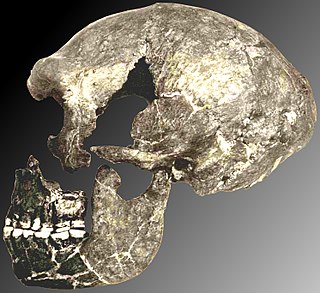 W
WLa Quina is a Middle and Early Upper Palaeolithic site in Gardes-le-Pontaroux, Charente, France. Two Neanderthal skulls were found there, La Quina 5 and La Quina 18. It is the type site of the Quina Mousterian.
 W
WLong Mile Cave, sometimes known locally as Pick'ny Mama Cave or Hell's Gate Cave, is a palaeontological and palaeoanthropological site in the Cockpit Country of north-western Jamaica.
 W
WThe Marimon i Casulleres rock shelter, also named Cal Perdiu rock shelter, is a rock shelter located in the Serra de Rubió, in the north of the municipality of Rubió, in Catalonia, Spain. It is known for being the hiding place of the bandits Marimon and Casulleres, after who the rock shelter is named.
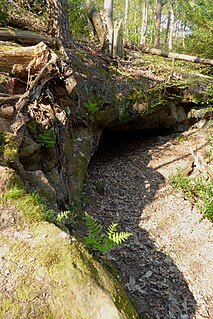 W
WThe Oldbury rock shelters are a complex of Middle Palaeolithic sites situated on the slopes of Oldbury hillfort near Ightham in the English county of Kent.
 W
WOxtotitlán is a natural rock shelter and archaeological site in Chilapa de Álvarez, Mexican state of Guerrero that contains murals linked to the Olmec motifs and iconography. Along with the nearby Juxtlahuaca cave, the Oxtotitlán rock paintings represent the "earliest sophisticated painted art known in Mesoamerica", thus far. Unlike Juxtlahuaca, however, the Oxtotitlán paintings are not deep in a cave system but rather occupy two shallow grottos on a cliff face.
 W
WPedra Furada is an important collection of over 800 archaeological sites in the state of Piauí, Brazil. These include hundreds of rock paintings dating from circa 12,000 years before present. More importantly, charcoal from very ancient fires and stone shards that may be interpreted as tools found at the location were dated from 48,000 to 32,000 years before present, suggesting the possibility of a human presence tens of thousand of years prior to the arrival of the Clovis people in North America.
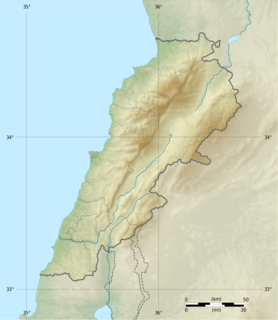 W
WRas Baalbek I is a rock shelter 500 m (1,600 ft) east of Ras Baalbek in the northern Beqaa Valley in Lebanon. It sits north of the Wadi Teniyet er-Râs valley at a height of 1,000 m (3,300 ft). It was first discovered by Lorraine Copeland and Peter Wescombe in 1965–1966. It was later excavated by Jacques Besançon in 1970. Retouched blades along with a pressure-flaked arrowhead and a burin were found dated to the Neolithic period.
 W
WThe Reverdit rockshelter is a rockshelter with sculpted friezes dating to the Upper Palaeolithic, specifically the Magdelenian. It is situated in the commune of Sergeac, in the Vezere Valley of the Dordogne region in France, close to many other sites with surviving palaeolithic art, including Lascaux Cave. It is part of a complex of 12 rock shelters known as Castel Merle.
 W
WThe Roca dels Moros or Caves of El Cogul is a rock shelter containing paintings of prehistoric Levantine rock art and Iberian schematic art. The site is in El Cogul, in the autonomous community of Catalonia, Spain. Since 1998 the paintings have been protected as part of the Rock art of the Iberian Mediterranean Basin, a UNESCO World Heritage Site. Inscriptions in Northeastern Iberian script and in Latin alphabet indicate that the place was used as a sanctuary into Iberian and Roman times.
 W
WSidlaphadi near Badami in Karnataka, is a natural rock bridge and pre historic rock shelter. It is located at about four km. in the middle of a shrub jungle near the historic town of Badami. A bridle and kutcha path through sandstone hills from Badami leads to Sidlaphadi and there is no metal road to the spot. Sidlaphadi literally means in Kannada the Rock of lightning, derived from gaping holes in the natural rock arch, which was formed when a lightning struck. The natural rock bridge structure looks like a wide arch between two sandstone boulders. The rock structure has large, gaping holes in the arch and allows sunlight to enter inside which provides the required light for interiors. It was also a shelter for hunter-gatherer prehistoric people.
 W
WThe Tharia Cave paintings are prehistoric paintings which have been discovered in March 2015 at Tharia Cave, the most ancient rock shelter in Pabu Mountain, located near the Qili village, Chatoka Bhit, Pallimas valley, Tahseel Wadh, Khuzdar District of Balochistan, a western province of Pakistan. The paintings represented on rock shelter are divided into five panels. The Tharia Cave paintings show dancing men in a row and in straight line, humped bulls and deer-like animals. Most probably, the cave paintings belong to the Paleolithic period.
 W
WToca da Tira Peia is a rock shelter site, located in the municipality Coronel José Dias, Piauí state, near the Serra da Capivara National Park, Brazil, thought to hold evidence of prehistoric human presence in South America dating to 22,000 years ago.
 W
WToquepala Caves are located near Toquepala mine, about 154 km (96 mi) from the city of Tacna, in the extreme southeast of Peru. They are notable for a number of rock paintings. The best known of them is the cave named Abrigo del Diablo.
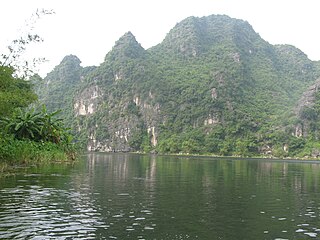 W
WTràng An is a scenic area near Ninh Bình, Vietnam renowned for its boat cave tours. On 23 June 2014, at the 38th session of the World Heritage Committee in Doha, the Trang An Scenic Landscape Complex was inscribed as a UNESCO World Heritage Site.
 W
WThe Udayagiri Caves are twenty rock-cut caves near Vidisha, Madhya Pradesh from the early years of the 5th century CE. They contain some of the oldest surviving Hindu temples and iconography in India. They are the only site that can be verifiably associated with a Gupta period monarch from its inscriptions. One of India's most important archaeological sites, the Udayagiri hills and its caves are protected monuments managed by the Archaeological Survey of India.
 W
WVikramkhol or Bikramkhol cave is a prehistoric archaeological site known for prehistoric inscriptions.
 W
WWarwasi is a Paleolithic rockshelter site located at north of Kermanshah in western Iran. It was excavated by Bruce Howe under direction of late Robert Braidwood in the 1960s. This site contains a rich archaeological sequence from Middle Paleolithic to late Epipaleolithic.